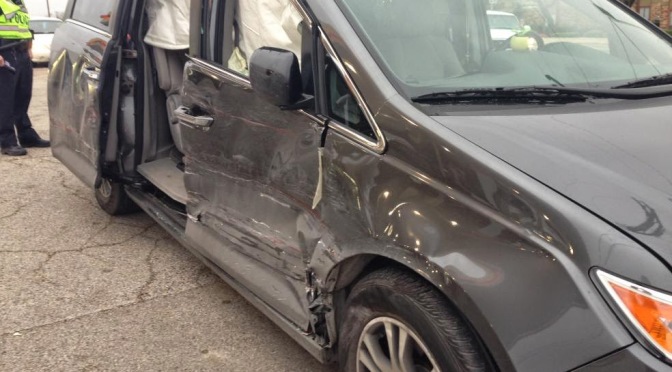Driving is an immense responsibility with potentially deadly consequences, which is why I started this car safety blog. Here is how to drive with the goal of staying alive long enough to die of old age. First are a series of articles I’ve written on best practices related to driving, as well as unconventional wisdom about driving that is too often neglected by the institutions that claim to be invested in our safety on the road.
Driver Safety During Seasons and Holidays
How to Drive Safely on Thanksgiving, Every Year
5 Reasons to Buy Winter Tires For Your Car, SUV, or Minivan
On Factors Affecting Driver Safety in the US vs. Abroad
Driving in the US More Dangerous Than in Europe
Why Are Swedish Roads So Safe?
General Tips
Here are general tips on driving safely, every single trip, every single mile. If too many of these tips seem overwhelming, focus on the first three, as the lion’s share of deaths are related to breaking at least one of them.

1. Make sure everyone in the vehicle (including you) is buckled up.
Wearing your belt increases your odds of surviving a potentially fatal accident by 45%. Having just one occupant (including a child!) in a vehicle who is unbelted significantly increases the risk of every other occupant in the vehicle dying, as the unbelted occupant becomes a human cannonball. This also applies to random heavy things in the back seat. Everything in the vehicle that isn’t restrained becomes a projectile, and something as small as a baseball or an iPad can cause severe injuries or death in a collision.
2. Drive the speed limit (or lower!)
About 1 out of every 3 fatal accidents involves speeding as a primary factor. Forces increase exponentially with speed, which means that a 65 mph crash is 264% as intense as a 40 mph crash, since the energy increases with the square of the velocity (i.e., your speed). It’s not worth it. Follow the speed limit as much as you can. Most of the crashes I look at involve speeding. It cuts down your reaction time, makes crashes much, much more severe, and is a quick way to turn avoidable collisions into fatalities.
3. Drive sober (like a Swede).
As with speeding, alcohol is implicated in around 1 out of every 3 fatal crashes. Remember that as little as one drink significantly increases your odds of causing a fatal crash. There is *no* safe amount of alcohol for driving. And keep in mind that in most countries similar to the US, the blood alcohol limit is *lower* than it is in the US. This is part of why it’s actually safer to drive in most rich countries besides the US; they recognize the dangers of alcohol.
4. Drive without distractions.
Put down the phone; turn off the radio. Keep your eyes on the road. You’re covering dozens of feet per second when driving at highway speeds, and it takes dozens of feet to react, and dozens more to stop. Studies suggest that handheld devices still don’t come anywhere close to driving without distractions; make driving your priority every time you get behind the wheel.
5. Drive as little as possible.
The best way to stay alive as a driver is to stay out of your car. Especially if you’re driving in the United States. The average driver puts on close to 15,000 miles a year. Don’t be the average driver. Remember that fully 1/2 of all collision fatalities involve multiple vehicles; no matter how safe you are, you can’t control what the other drivers around you are doing, and there’s a good chance that what they’re doing isn’t safe.
6. Drive during the daytime.
Crashes are more likely to occur at night. As are drunks. Late Saturday and early Sunday appears to be a particularly attractive time to drunk drivers who cause fatal crashes. When you drive during the daytime, the other drivers are more likely to be sober and also more likely to be awake. Of course, visibility is also much better during the daytime.
7. Drive the safest vehicle you can.
See the “How to choose a safe car” guides for more. Essentially, you’re looking for good safety scores, side airbags, ESC, and some height on your vehicle. Keep in mind that safe vehicles are available in the used car market as well; you don’t have to take out a car loan to stay alive. The above image, courtesy of the husband in this collision, shows exactly what you want your vehicle to do in a side impact collision.
(Bonus) Make sure you have emergency gear available.
While the most important things you can do in a car involve driving attentively and wearing your seat belt, there are a range of additional bits of safety gear that can mean the difference between life and death in dire situations. Here are some bits of gear I recommend every driver have in his or her car at all times.
 If you find my information on best practices in car and car seat safety helpful, you can do your shopping through this Amazon link. Canadians can shop here for Canadian purchases. It costs nothing extra to do so, but when you shop through my links, a small portion of your purchase, regardless of what you buy, will go toward the maintenance of The Car Crash Detective.
If you find my information on best practices in car and car seat safety helpful, you can do your shopping through this Amazon link. Canadians can shop here for Canadian purchases. It costs nothing extra to do so, but when you shop through my links, a small portion of your purchase, regardless of what you buy, will go toward the maintenance of The Car Crash Detective.

